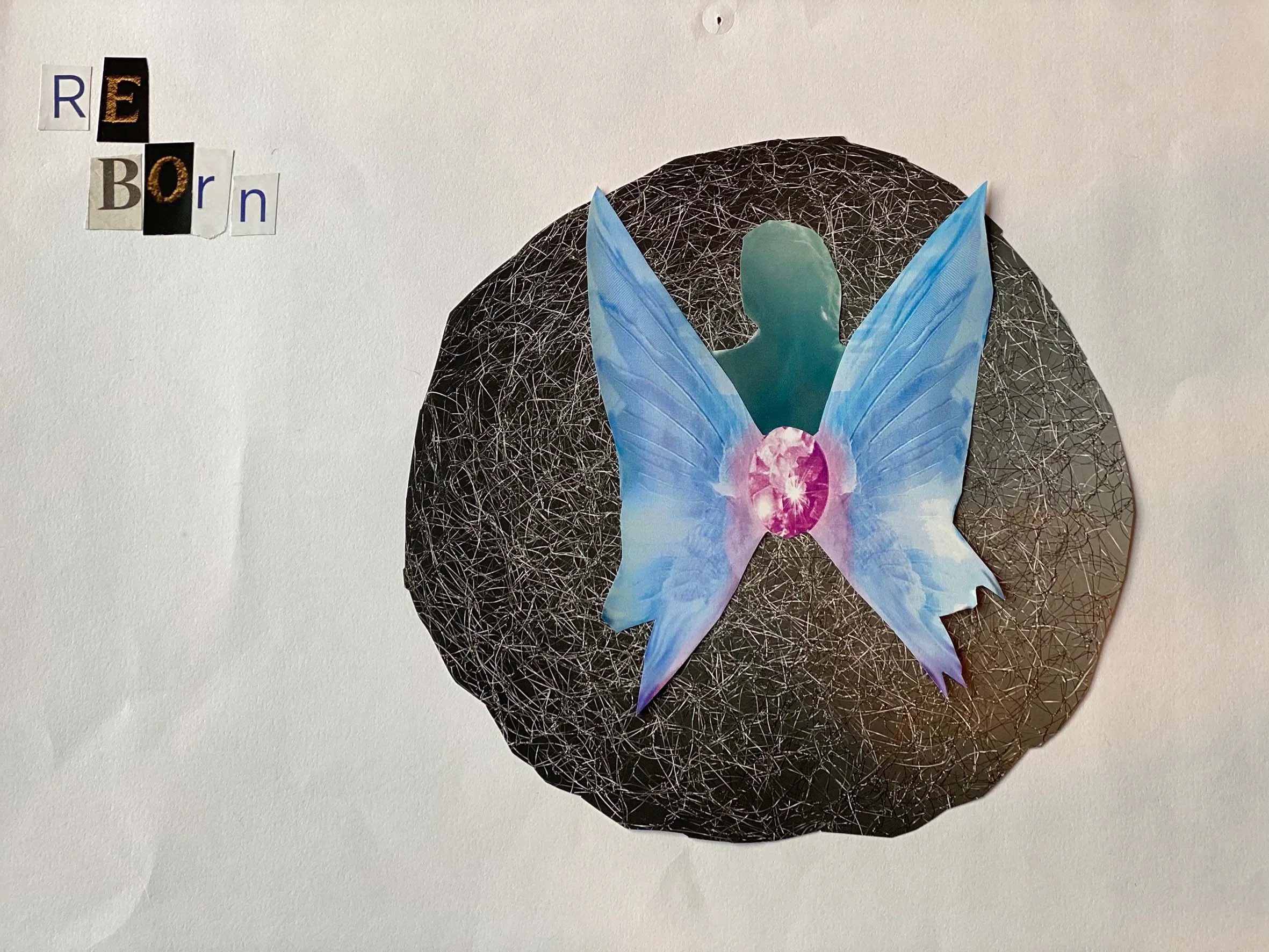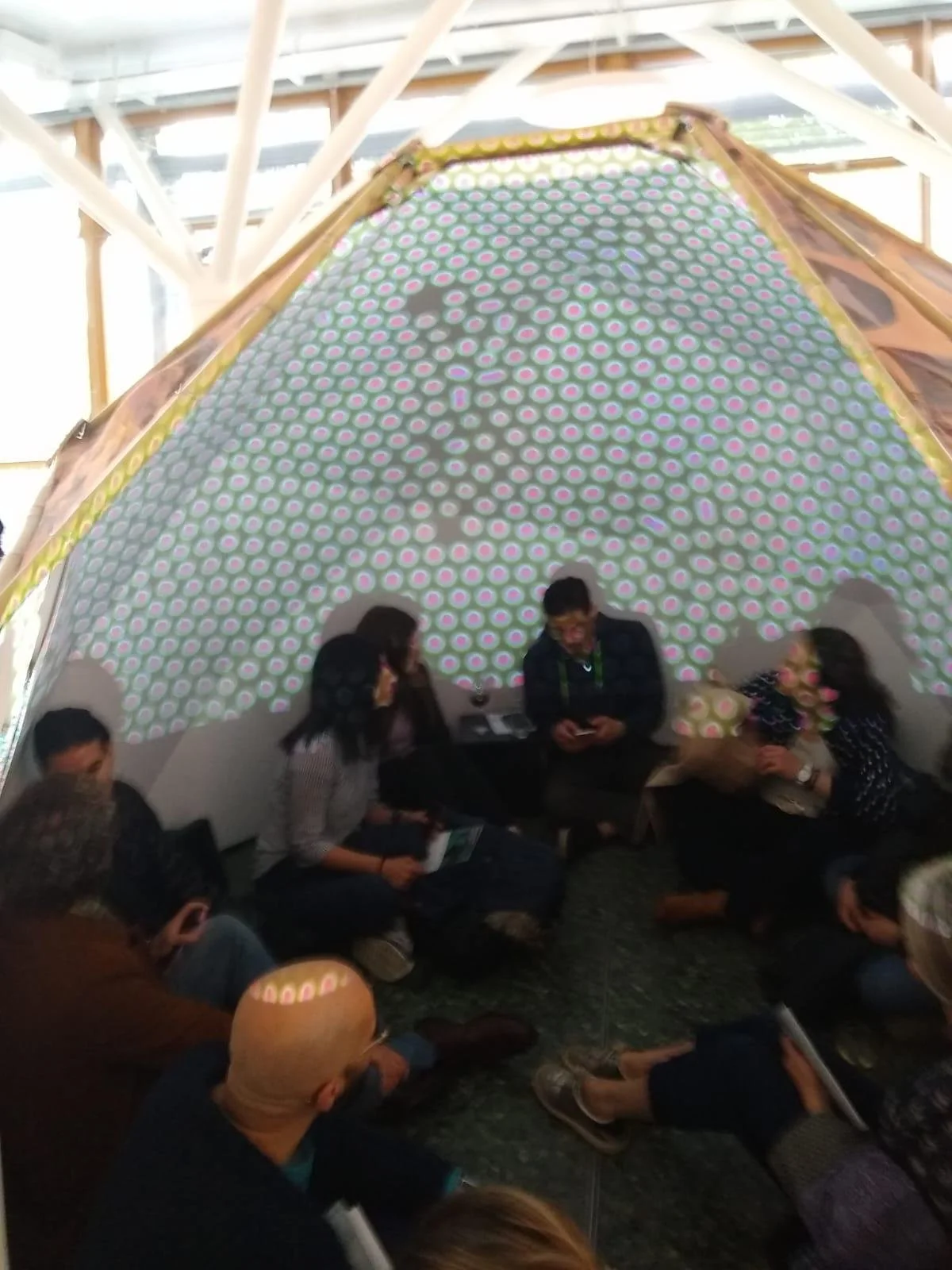Bubble Worlds: a UCL Trellis Commission
Above: Bubble Worlds, 2022. The cocoon, showing interior projection of a Turing pattern.
Above: Code<Your>Future trainees, the art team, UCL Mechanical Engineering at the first creative workshop, September 2021
Trellis 03
Trellis is a public art project run by UCL (University College London). It brings together artists, scientific researchers and local community groups, with the aim of creating and building a unique public art and science project together, culminating in a public show in April 2022. I worked with soft-robotics experts from the Mechanical Engineering department.
Our Team
Together, we’re partnered with Code<Your>Future (CYF), a coding school for refugees & disadvantaged people. CYF is a non-profit organisation that trains the most deprived members of society to become web developers and helps them find work in the tech industry.
Our Aims
We set out to explore the effects of the pandemic and multiple lockdowns on the lives of our community group (we were mindful that disadvantaged people, potentially already isolated, could be impacted profoundly by the societal changes of the past two years). In doing so, we wanted to explore how our skills as artist, coders and researchers could collaboratively create work that tells stories and expresses feelings in new ways. Specifically, we wanted to create an artefact that explore these issues through the creative use of code and soft robotics to make a nurturing, shared experience.
Our process
To put co-creation at the heart of the project, we hosted an ongoing programme of inclusive creative workshops, generating, developing and building ideas.
A kick-off day at PEARL, the new UCL Engineering campus, in September 2021, identified strong common themes among the participants and helped us design a subsequent programme of workshops to take a deeper dive into our communal thoughts. We identified three streams of work: Creative Coding, Audio/Poetry and Soft Robotics, each facilitated by relevant specialists.
The CYF students were learning Javascript as part of their course, building databases and websites. So together with fellow artists Veera Jusilia and withLasers, we led workshops looking into the creative use of P5.js - namely flocking behaviour and Reaction Diffusion patterns. These were in turn based on Schiffman’s ‘The Nature of Code’ and ‘Generative Design’ (Gross et al).
Above: Collage by Negin Derakhshaan, Code<Your>Future Graduate & Volunteer.
Our outcomes
For most of our CYF Trainees, the first part of lockdown was anxiety inducing, confusing and filled with worries about loved ones. But then participants spoke of a feeling that they needed to consciously block out the negativity of rolling news, that lockdown was a time of opportunity: to study, to apply oneself, to improve lives, get qualified, look for jobs, get fit, spend time outdoors. This is probably reflective of the CYF cohort - motivated people, in the process of learning and self-improving.
The material output from the first workshops was a collection of collages made by the trainees during the course of the day. They are powerful visual and verbal expression of their experiences, and we intend to use them as part of the final show.
The Artefact & Exhibition
Together, we made something that expresses and explores these themes from our workshops: it is a cocoon-like structure that embodies the ‘bubble worlds’ created for self preservation.
Externally, there is a look and feel, of uncertainty and anxiety. The cocoon is based on the geodesic dome used by the UN in its refugee camps. These structures are often criticised for their uniformity, so we deformed our structure, allowing each panel to be a unique, bespoke size. We then covered it in a printed treatment of the student’s collages.
On the interior of the cocoon, we projected reaction diffusion patterns that corresponded with certain mood expressions of octopus vulgaris, the common octopus. The change between patterns was affected by human presence, via a CO2 detector within the stricture. An accompanying soundtrack, made in Ableton, featured selected student reading out a William Blake poem (which we had studied during a poetry workshop) in their own languages (Farsi, Turkish and Ukrainian).
In consultation with the UCL engineers, we fitted some panels with soft robotics, allowing a simulated ‘breathing’, creating an uncanny and empathic space - and an art-based social robotic experiment.
The show took place in April/May 2022 at the Mile End Art Pavilion, London E3. Bubble Worlds was runner-up at the ICSR 2022 - 14th International Conference on Social Robotics!
Listen to the audio “To see a world in a grain of sand…”










